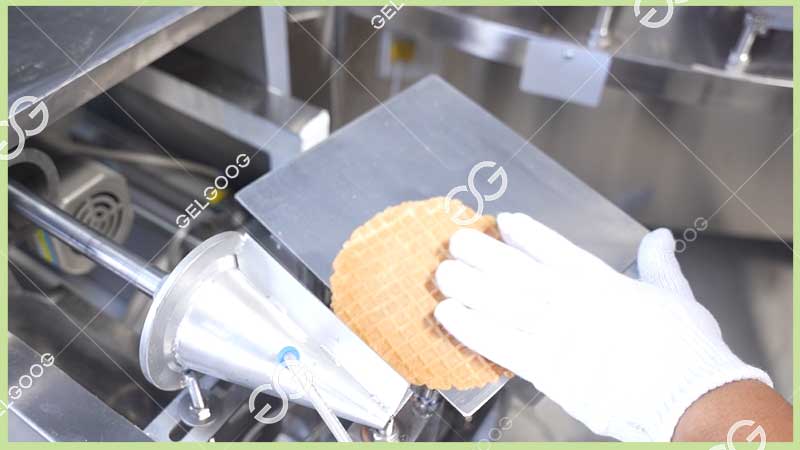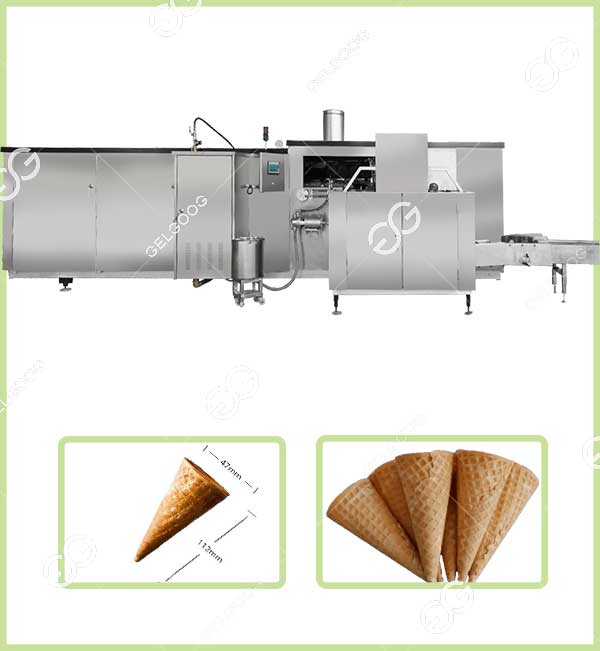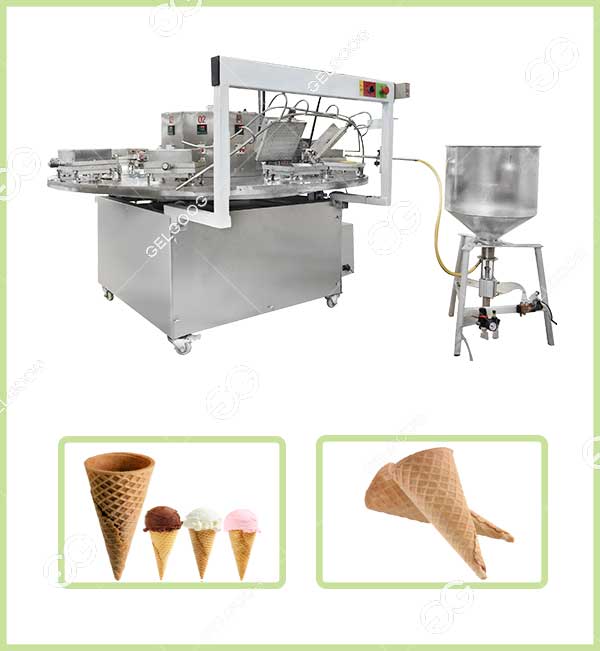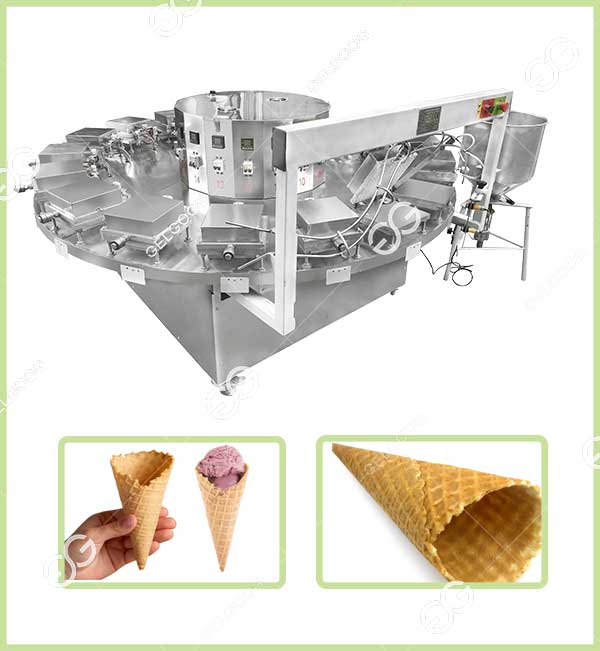Sugar cone making machine is a kind of equipment specially used for producing sugar cones, which are loved by consumers for their crispy taste and diversified shapes.

Working Principle
The sugar cone making machine processes the batter into sugar cones through a series of automated and semi-automated steps. The following is its main working process:
- Raw material mixing: Mix sugar, flour, eggs, milk, butter and other raw materials in a certain proportion, stir evenly, and make a batter suitable for cone forming.
- Batter storage: The prepared batter is usually stored in the batter storage tank of the machine and transported to the forming mold through a pipeline.
- Quantitative injection: The batter is transported from the storage tank to the heating plate through a quantitative pump or pneumatic device. The amount of batter on each heating plate can be precisely controlled by the regulating device to ensure the thickness and size of the cone is consistent.

- Baking and forming: The heating plate rotates on the turntable, and the batter is heated and baked on the heating plate to form a pancake. The temperature and time of the heating plate can be precisely adjusted by the temperature control system.
- Rolling process: After baking, the pancake is transferred to the rolling device by a mechanical device, and the pancake is rolled into a cone shape through a rolling mold.
- Cooling and shaping: After the rolled cone is cooled by the conveyor belt, it is shaped and keeps its shape.
- Manual collection: The cooled cone is removed by the conveyor belt, and the operator collects and packs the cone.
- Automatic collection (some models): Some fully automatic models are equipped with an automatic collection device to directly send the cone to the packaging area.

Equipment Features
- The sugar cone making machine is designed to improve production efficiency, ensure product quality, and reduce manual intervention. The following are its main features:
- Efficient production: high output and continuous operation mode to improve production efficiency.
- Easy operation: high degree of automation, easy to use, and reduce manual intervention.
- Diversified production: meet diversified market needs by changing molds and adjusting recipes.

- Stable product quality: precise temperature control system and uniform heating design to ensure consistent product quality.
- Hygiene and safety: stainless steel material and safety design meet food processing hygiene standards.
- High cost-effectiveness: low equipment cost, low maintenance cost, low energy consumption, and reduced operating costs.
- Small footprint: compact design, suitable for production sites with limited space.
- Strong flexibility: easy mold replacement, strong applicability, suitable for a variety of application scenarios.
Leave A Message To Get A Quote
Click to rate this post!
[Total: 0 Average: 0]




Reviews
There are no reviews yet.